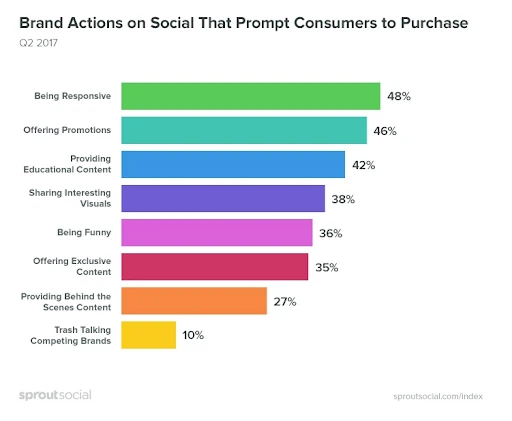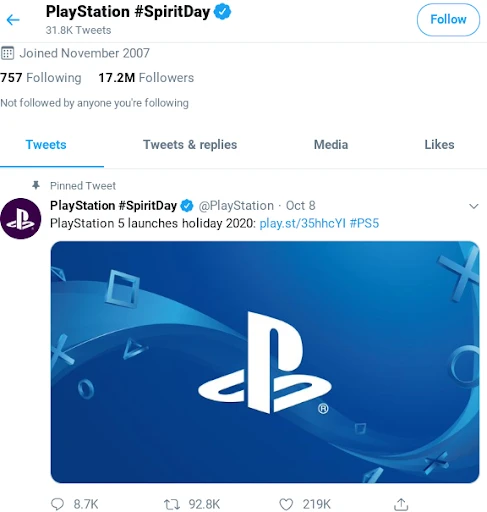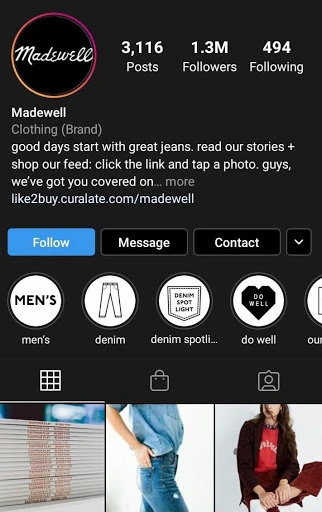The Right Way to Promote Your Business on Social Media
Published by Incomedia in Guides and Tips · Thursday 10 Sep 2020
Promoting your business on social media is one of the most professional ways to take advantage of the opportunities made available by the Internet. It allows you to reach a broad target audience, increase traffic and conversions, and raise your company's profile, among many other benefits. Let's take a look at how to choose a social media platform to start promoting your business.


Facebook






Why Is Social Media Important for Promoting Your Business?
When comparing SMM - social media marketing - with traditional, offline publicity, the following advantages become clear:
• An affordable price for capturing new clients with advertising: you can configure your social media marketing to reach valuable target audiences;
• Targeted access to a broad audience.3.2 billion people around the world use social media;
• quick feedback from customers and the ability to respond immediately;
• increased brand loyalty among customers. Good social media marketing isn't about aggressive advertising, but rather about communicating and creating useful content. This ranges from entertainment to contests, special offers, and informal communications.


The Main Steps for Promoting Your Business on Social Media
How do you promote your business on social media? First, there are a few steps you need to take in order to prepare:
1. Set a goal. You need to understand why you're creating a company account and what results you expect from your promotions. These goals need to be specific: exact time frames, the profit you expect to earn, and the total sum you're investing. For example, "Increase the website's conversion rate by 45% in a year by investing $2,000."
2. Choose a platform for your promotion. The best social media platform for your company depends on the company, your product, your positioning, and your target audience. To choose your platform, start by conducting a preliminary market analysis, studying your target audiences' needs, and looking at what kind of social networks your competitors are using.
3. Create and publish your page. Nearly every social media platform offers the option of creating a separate business account (Facebook, Instagram, Pinterest). Your profile includes a series of tools you can use to engage your audience, develop content, obtain analytics, and promote your business. Your main task is to create visual branding elements for your account (including a profile picture, a header, and a page description).
4. Fill your page with content. A company profile isn't a private page. The frequency of your posts, maintaining a uniform style (graphics and text), and alternating advertising materials with informative or entertaining articles are all important factors for your company page. Prioritize the quality of your materials: avoid making mistakes and avoid topics that could offend certain groups of people. You should also pay attention to the frequency with which you post (especially during periods of greatest activity among your target audience). That's why you should fill your page using a content publishing schedule that you plan in advance.
5. Building an audience. This is a comprehensive job: it requires you to prepare and publish posts continuously, to reply to comments, respond to reviews and criticism, configure your advertisements, track and analyze metrics, adapt your strategy, and so on.
How to Choose the Right Social Network to Promote Your Business
Let's take a look at the features and distinguishing characteristics of the world's most popular social networks in terms of promoting brands.
This is the biggest social network in the world, with over 2.2 billion active users. Promoting your business on Facebook has many advantages: first, there's a target audience for nearly every sector, and second, its audiences are generally reliable adults.
Facebook's users appreciate high-quality content. Brands can choose from different paid promotion tools, performance analytics, and Facebook Pixel to collect information about user behavior, personalize Facebook Messenger bots, and dozens of other features.

In general, this is considered the best social network for all business sectors (except for those that are prohibited by the site's policies or the law). The effectiveness of your promotions depends directly on publicity.Twitter
Twitter is known for its short messages. The most interesting of these are quickly spread by users' retweets. Think of marketing on Twitter as an opportunity to inform the public quickly, and to draw users to your website (increasing traffic). This social media platform offers advertising tools to brands.

In general, the consensus is that this platform is appropriate for companies that are active and have social engagement. If you can post 3-5 tweets a day that briefly share news about ongoing events - this social network is right for your brand.Instagram
This progressive platform is growing fast. Its main characteristic is that content is posted in the form of images, photos, and short videos. Home to a younger audience, it allows clothing, accessory, furniture, and other brands with greater aesthetic value to convert customers quickly. Of course, you can use Instagram for business (creating and publishing high-quality content). It also provides advertising tools.

The general consensus is that Instagram can help you promote ongoing sales and grow your audience. It's recommended for companies that offer strong emotions or beautiful products to their audiences.Pinterest
Like Instagram, this site mainly focuses on visual content. Advertising on Pinterest is advantageous for brands that offer products and services. Users often visit this social media platform to create "shopping wishlists": adding products they like to a list of planned purchases. According to statistics, 21% of users have purchased products they add to these lists.

The general consensus is: Pinterest is recommended for any business with something to show. To be successful, you need to offer attractive, beautiful content with a unique and intriguing page layout.
3 Strategies for Promoting Your Business on Any Social Network
Content marketing, community management, viral marketing, as well as organic and targeted advertising are all methods for promoting brand profiles that are important on almost all these websites. But what happens if we take a step back from the methods and tools and focus on general promotional strategies?
Listen to Your Audience
Respect all opinions. Thank each reviewer. Answer every question. Take criticism into consideration and try to understand the situation.

All opinions from your followers, even the negative ones, are useful for your brand. They demonstrate customers' negative emotions and can help you find ways to improve a product or service. That's why you should:
• read everything your customers write on your page. Participate in discussions;
• Conduct surveys to gain insight into customer opinions;
• turn problems (negative comments) into solutions.
Demonstrate Your Expertise
Publish content that offers new knowledge to your target audience. Present your expertise clearly. Talk about your company and your product. Show that you're a professional player in your industry. What can you do?
• film videos that show how your products are created, along with the people and technology involved;
• publish instructions (in video format) for using your product;
• develop a series of posts in which your company's representatives share information with the public.

Balance is key: use formats that are interesting and appropriate for the social network at hand, but don't leave room for incompetence. When you create content, your company's experts should combine forces with the creative team that handles SMM.
Quality is King
The formula is simple: it's best to gain 10 true fans of your brand than 100 "random people." It's better to publish 1 interesting post a day than 10 posts that just say "good morning", "have a nice day", and "good evening". It's better to proofread and double-check every single word than to let typos or ambiguity diminish your reputation. Quality social media content includes:
• tips, instructions, and professional opinions;
• real cases and success stories;
• news and important updates;
• thoughts and opinions from the brand's leaders;
• selections of books and movies that may interest your audience;
• interesting posts that intersect with the others.
Useful Promotional Tools
If you decide to launch a promotional campaign without working with SMM specialists, you can use these tools to design your pages and create your content:
1. Logopony - a logo generator that you can use to create profile pictures, cover images, and watermarks when posting photos.
2. Sproutsocial - a simple tool for editing images in the right formats for various social networks.
3. Crello - an assistant for developing cover designs for a company profile. You can use your own photos or choose from the service's image library.
4. Pexels - a gallery of free photos for creating posts and cover images for company profiles.
Conclusion
For many brands, promoting the company on social media is a priority. The ability to capture new audiences, increase business, and build a positive reputation is very appealing. Before you take your first steps, make sure you've defined your goals, chosen the right site, and created a solid plan for posting high-quality content. Criteria for success: respect for your public, attention to detail, and an expertise-driven approach.

